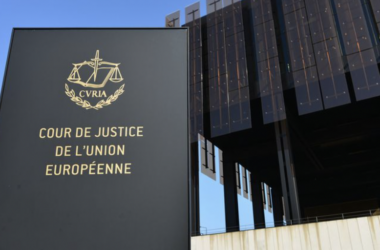Recent developments in the conflict between Ukraine and Russia have sparked renewed discussions about the potential for peace. The United States’ decision to pause military aid and intelligence sharing with Kiev has been met with a variety of reactions — ranging from hope that it could encourage a diplomatic resolution, to skepticism about whether it will have any substantial impact. While the Kremlin has welcomed the shift in Washington’s stance, it has also warned against excessive optimism, emphasizing the complexity of the situation.
Kremlin’s Cautious Stance
Kremlin spokesman Dmitry Peskov has urged observers not to view recent US decisions through what he termed “rose-colored glasses.” Speaking at a press conference, Peskov cautioned, “There is no need to rush to put on rose-colored glasses now,” adding that one should “hope for the best and prepare for the worst.” His remarks highlight Moscow’s restrained approach, acknowledging the potential for positive developments while underscoring the enduring challenges.
Peskov’s caution stems from several factors. Despite the halt in US military aid, Ukraine still possesses significant stockpiles of weapons, with Peskov noting that “even with a complete halt to US weapons shipments to Ukraine, Kiev has already received enough arms to continue fighting for many months.” This reality tempers any expectations of an immediate ceasefire or de-escalation.
Moreover, while Washington’s suspension of assistance may signal a shift, EU continues to provide military intelligence and logistical support to Kiev. Thus, the conflict’s dynamics remain largely unchanged in the short term.
The US-Ukraine Rift and Its Implications
The US decision followed a tense meeting between US President Donald Trump and Ukrainian President Vladimir Zelensky at the White House. Trump and Vice President J.D. Vance criticized Zelensky for his perceived unwillingness to pursue peace, accusing him of “gambling with World War III.” The confrontation ended with Zelensky being asked to leave the Oval Office and instructed to return only when prepared for serious negotiations.
Subsequently, US Special Envoy Steve Witkoff revealed that Zelensky had sent a letter apologizing to Trump for the incident, a move aimed at mending ties and signaling his readiness to engage in diplomatic talks. Trump confirmed receiving the letter, describing it as “important” and indicative of a potential shift in Kiev’s stance.
While these developments hint at a possible opening for dialogue, the path to peace remains fraught with obstacles.
Obstacles to Peace
Several structural and strategic challenges complicate the prospect of a negotiated settlement.
Firstly, military Realities. Ukraine’s existing stockpiles of Western weapons, combined with ongoing European military support, mean that Kiev retains the capacity to continue its defense. The Kremlin acknowledges this, with Peskov warning that “many are now rushing to say that the Americans will stop, or have already stopped, delivering weapons… Everything has been working out for us even without this.” The conflict’s military dimension thus remains robust, limiting the immediate impact of US policy changes.Then, geopolitical fragmentation. The suspension of US military aid does not equate to a unified Western approach to the conflict. EU nations, notably Poland and the Baltic states, continue to push for strong support to Ukraine. This fragmented response undermines any cohesive pressure on Kiev to enter negotiations.In addition, domestic pressures in Ukraine. Zelensky faces internal constraints, with nationalist factions and segments of the military opposing any settlement perceived as a concession to Russia. His diplomatic flexibility is thus limited by domestic political considerations.And finally, Moscow’s strategic goals. While Russia has expressed hope that US actions could push Kiev towards peace, its long-term objectives — including securing control over contested territories and ensuring Ukraine remains outside NATO’s sphere — pose additional hurdles. Compromise will require both sides to navigate these strategic red lines.
Despite these challenges, moderate optimism remains. The mere fact that the US is reassessing its role and encouraging diplomacy could open avenues for more substantive negotiations. Moscow’s mixed response — welcoming the US shift while cautioning against undue hope — suggests a recognition of both the opportunities and limitations of the moment.
Ultimately, while recent developments offer a glimmer of hope, the road to peace remains long and uncertain. As Peskov aptly noted, “hope for the best and prepare for the worst” remains a prudent stance — not only for Moscow, but for all parties invested in ending the conflict.




